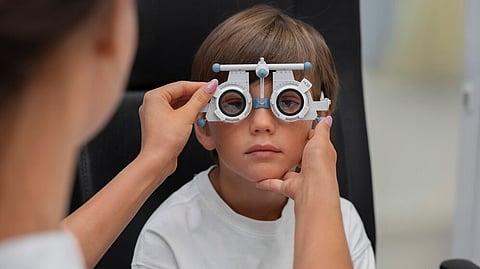A meta-analysis in the British Journal of Ophthalmology showed rising myopia rates among children, particularly in urban and high-literacy environments, with prevalence escalating from 24% (1990-2000) to 36% (2020-2023). In Scandinavia, however, cultural practices like spending time outdoors from an early age could be key to lower myopia rates. Parents there often leave babies outside in strollers, a norm researchers believe could positively impact visual development. But as Dr. Donald Mutti of Ohio State University points out, children worldwide are drawn indoors by the appeal of screens, depriving them of the outdoor exposure they need for eye health.
Barriers to Outdoor Time and Socioeconomic Impact
Despite the recommendations, there are obstacles. In some communities, outdoor spaces are scarce or unsafe, and educational pressures often prioritize indoor learning. For families in low-income neighborhoods, finding safe, accessible outdoor spaces is challenging, making it difficult to meet the recommended outdoor exposure.
Treatment and Prevention: Current Approaches and Limitations
Though treatments for myopia have grown over the last 20 years, including low-dose atropine eye drops and multifocal lenses, results remain limited. These treatments slow eye growth but don’t stop or reverse myopia, highlighting the need for more effective solutions. This urgency is echoed by the NASEM report, which calls on the National Institutes of Health (NIH) to fund research for innovative treatments. Additionally, reclassifying myopia as a disease could make eye exams more accessible and increase pediatricians’ roles in identifying and managing early cases.
Why Early Intervention Matters
Vision health isn’t just about seeing clearly. Children’s self-esteem, educational outcomes, and psychological well-being can all be impacted by untreated myopia. “Every child remembers the day they first got their pair of glasses,” Mutti observes, stressing the psychological weight myopia carries. By making outdoor time part of the school day and prioritizing eye care, experts believe we can address the rising epidemic more proactively.
Reference:
Liang J, Pu Y, Chen J, Liu M, Ouyang B, Jin Z, Ge W, Wu Z, Yang X, Qin C, Wang C. Global prevalence, trend and projection of myopia in children and adolescents from 1990 to 2050: a comprehensive systematic review and meta-analysis. British Journal of Ophthalmology. 2024 Aug 14.
(Input from various sources)
(Rehash/Josna Lewis/MSM)


